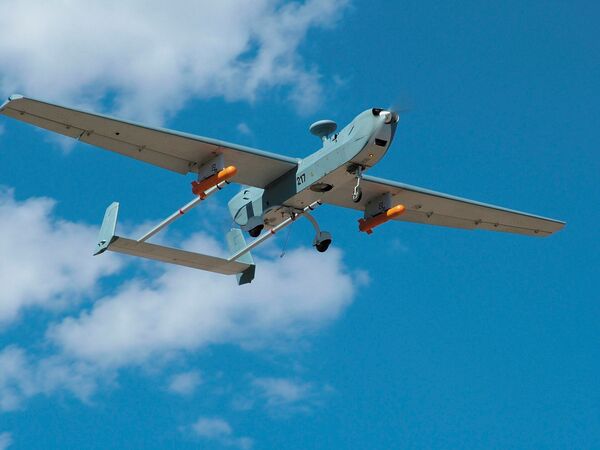
An RQ-5 Hunter UAS is equipped with the GPS-enabled Viper Strike munition. (MBDA)
The newest variant of the BAE Systems-built global positioning system (GPS) guided weapons receiver will be capable of transmitting across Military Code (M-Code) signals, company officials announced this week.
The new Strategic Anti-jam Beamforming Receiver – M-Code (SABR-M) GPS receiver leverages “advanced beamforming technology” to improve signal reception across military and civilian GPS spectrums, while meeting size, weight, and power (SWaP) requirements in unmanned aerial systems (UAS), precision-guided munitions, and advanced missile systems, according to a 7 June company statement.
“We're making our full portfolio of military GPS solutions M-Code-compatible to meet warfighters' need for reliable positioning, navigation, and timing data to achieve their missions,” said Doug Lloyd, director of weapon systems GPS at BAE Systems, in the 7 June statement.
Company officials anticipate that the new M-Code-capable SABR will be ready for full-rate production at the end of 2022. Production will take place at BAE Systems' new facility in Cedar Rapids, Iowa, according to the statement.
A majority of GPS capabilities for assured positioning, navigation, and timing (PNT) aboard the US armed forces' weapon systems are based on Selective Availability Anti-Spoofing Module (SAASM)-enabled GPS PNT. At its core, SAASM capabilities consist of an enhanced security architecture for GPS signal transmission, which is designed to encrypt and decipher signals via ‘over-the-air' rekeying of signal receivers.
M-Code, on the other hand, is a military-only GPS signal located in the L1 and L2 GPS bands that utilises a higher power signal, advanced message encryption formats, and signal modulation techniques to improve transmissions while hardening the signal against electronic warfare (EW) or signals intelligence (SIGINT) threats.
Looking to read the full article?
Gain unlimited access to Janes news and more...







